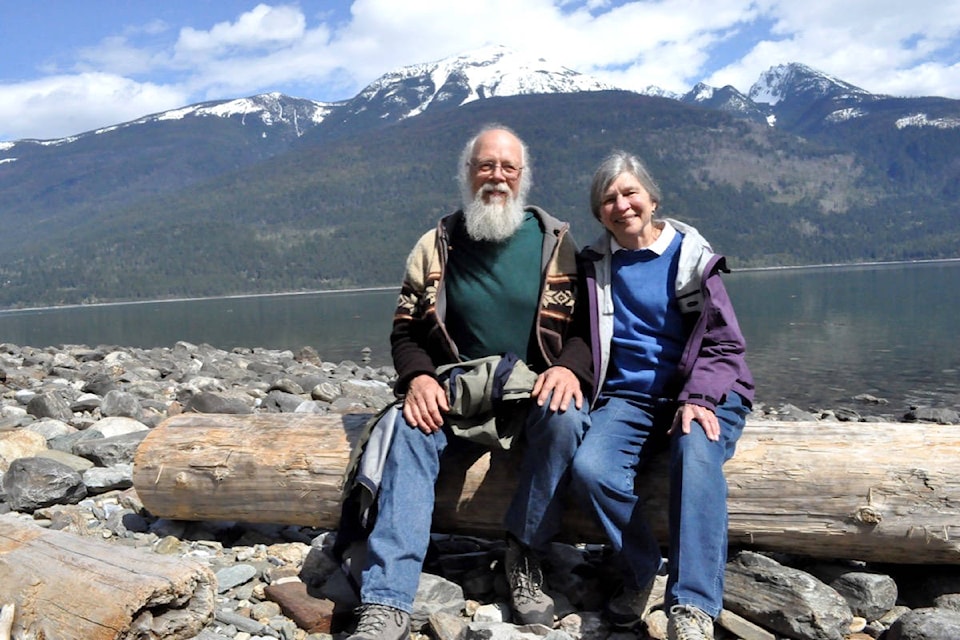The forest surrounding Argenta has been Carolyn Schramm’s home for nearly 50 years.
She moved to the remote community in 1970 to connect with nature, where she could make a life in a place she considers sacred.
“When I go into the forest I find it a great source of renewal,” says Schramm. “I think the idea of being concerned not only about the forest but the animals who live in the forest and make it their home is an important issue for me.”
But logging plans for what is locally known as the Argenta Johnsons Landing face, a roughly 10-kilometre stretch of unprotected land on a slope underneath Mount Willet that meets Kootenay Lake, could soon be putting the proverbial parking lot in Schramm’s paradise.
Cooper Creek Cedar, which owns two timber licences for the area, is currently assessing the stability of the slope with plans to have potential cut blocks and road routes identified by August. The company has said it expects a final logging application could be submitted to the provincial government by September or October.
Schramm is part of a local group fighting those plans. Mount Willet Wilderness Forever wants the land included in the Purcell Wilderness Conservancy, a vast provincial park that surrounds but does not include the AJL face.
The conservancy was first created in 1974 and later expanded to 202,709 hectares in 1995. Earlier this month the provincial government also announced it was adding another four hectares to the conservancy.
The AJL face, however, was excluded from the conservancy’s initial creation.
Ric Careless and Art Twomey were behind the original proposal for the conservancy. Careless, who worked for the provincial government at the time, told the Star in an email that preserving the Earl Grey Pass and Fry Creek Canyon had been the proposal’s priority.
Careless added it was assumed at the time that other areas along Kootenay Lake including the AJL face would be included later on, and that adjacent lands would not be considered for development.
The approximately 6,200 hectares of the AJL face would add just three per cent of land to the conservancy, but Argenta resident Gary Diers says it’s a vital piece of the puzzle.
“It’s a small area. We’re not asking for much, but I think it’s very significant ecologically,” says Diers, who has lived in Argenta since 1979 and is among Schramm’s group.
“It makes sense for our communities, it makes sense for tourism. It’s kind of one of these win-wins for everyone except the logging industry. They’ve got a lot of forest, they’ve got most of the province. It seems like time for the environment to have a break.”
In addition to the group’s campaign, a separate petition signed by over 100 residents of Argenta and Johnsons Landing was also sent earlier this month to the office of Nelson-Creston MLA Michelle Mungall as well as Doug Donaldson, the Minister of Forests, Lands, Natural Resource Operations and Rural Development.
That petition, which is specific to Cooper Creek Cedar’s forestry stewardship plan, requests guarantees made to protect local watersheds, an assessment of the single-lane road that connects the two communities, and an independent assessment of the face’s slope stability and karst.
Related: Company plans logging near site of Johnsons Landing slide
The plan to expand the conservancy isn’t new, but it has taken on a new urgency in a place that has a history of protesting on behalf of the environment.
One of Diers’ first memories of Argenta is residents protesting logging plans near a watershed just north of the community.
“There was very strong opposition at the time and it’s just been going on since then,” he says.
Stoking that opposition is the memory of the 2012 Johnsons Landing landslide, which killed four people and destroyed three homes.
There was consensus at a March meeting attended by independent geologists, provincial and regional representatives and Cooper Creek Cedar that it’s unlikely another slide of that magnitude could occur elsewhere on the face.
That’s cold comfort for Schramm.
“One concern we have is if there were a slide here, who’s responsible? I don’t see anyone really taking responsibility for that. I have made every effort to bring this issue forward, and I feel it’s being minimized because the intent is to log the hillside. I’m not sure whether this concern is really being dealt with as seriously as I would like.”
The area is also an ungulate winter range and includes elk, mule deer, goats, moose and white-tailed deer. Census data provided by wildlife biologist Aaron Reid, who works for the Ministry of Forests, Lands and Natural Resource Operations and Rural Development, shows caribou have not been observed in the conservancy since at least prior to the 1990s.
Logging the face, Schramm and Diers say, will ruin an area valued by residents, animals and visitors.
“This is visible wilderness,” says Diers. “Tourists think that this is the Purcell Wilderness Conservancy. But they are finding out pretty quick that it isn’t. Clear cuts are starting in.”
tyler.harper@nelsonstar.com
Like us on Facebook and follow us on Twitter
